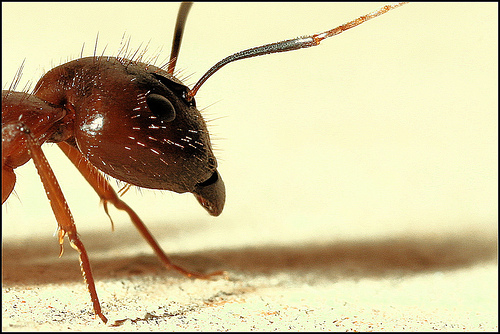
Sir John connected two telephones and held one over each of two different ant nests. He then disturbed one nest and waited to see if the sound of the frightened ants in one nest would alert the ants in the other. The other ants paid no notice. Thus, Sir John concluded that ants do not use sounds to communicate.
He was wrong. We now know that ants of many species have a “stridulatory organ”– a rigid area which when rubbed makes a distinctive squeak. While we can hear it, the noise produced by these organs serves a variety of purposes for the ants. Some use the noises to call for help when they’re in trouble. Others use it to alert the nest to a good find of food. One study found that playing the stridulating sound of a queen ant through a loudspeaker caused ants to protect the speaker as if it were a queen.
What did Sir John Lubbock do wrong? His only real problem was that he lacked of technology and modern scientific knowledge to answer his question. His story teaches us a valuable lesson about science and understanding the nature of the world around us. While some questions may seem unanswerable at the time, this does not mean we will never know the answers or understand how things work. As science continues to advance, we can better understand the natural mechanisms behind the mysterious questions we now have.
To read more about Sir John Lubbock’s experiments, be sure to read “Operator? Can You Put Me Through to Ant Nest 251?” on the NY Times Web site.

